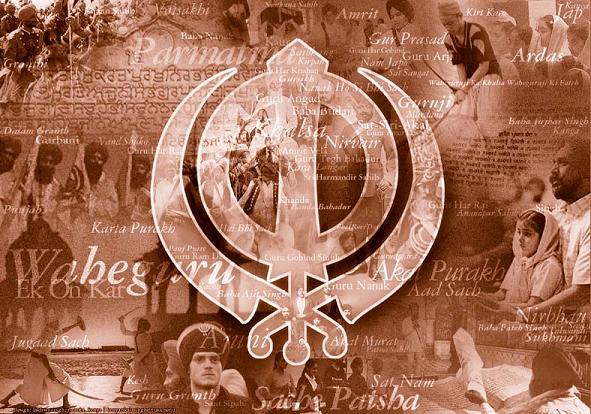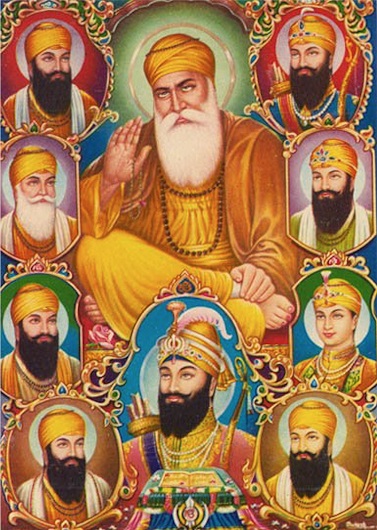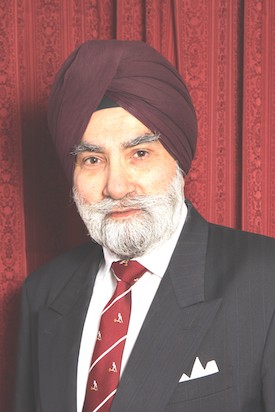“(When) the lamp is lit, darkness is dispelled…
… Where there is light of knowledge, ignorance is dispelled.”
(Guru Granth Sahib Ang.791)
When it comes to celebrating popular festivals like Divali or Christmas, the colourful and socially vibrant Sikhs are renowned for outdoing their neighbours. For them, relevance of such festivals to their religion is of little consequence. Divali is one such festival; although, the day, celebrated by the Sikhs as the “Bandi Chhor Divas” (The Day of Liberation) in the Nanakshahi Calendar, also marks some important and highly significant events in Sikh history.
The mythological origin of Indian (Hindu) Divali lies in the story of King Dasarth of Ayudhia's son Ram Chander, popularly known as Lord Rama. The night of Divali marks the return from 14 years in exile of Lord Rama, his wife Sita and brother Lachman. To celebrate their return home, the people lighted lamps. And so Divali continues to be celebrated each year by lighting lamps, holding firework displays and exchanging sweets and gifts with family and friends. This special night is called Divali.
However, in the Sikhs tradition Diwali has a very different, historically based, significance.
The story of Divali for the Sikhs is a story of the Sikh struggle for freedom. From the time of Guru Nanak (1469 - 1539), the founder of Sikhism, popular seasonal or folk festivals like the harvest festival of Vaisakhi, or ancient mythological festivals like Holi and Divali, or worship rituals like Aarti, began to take on a new significance for the Guru's students, the Sikhs. The 'Guru' as the Light of Guru Nanak passing through 10 Guru Personalities and now residing in the Sikh Scripture, Guru Granth Sahib, used these festivals and special days e.g. first day of each lunar month called Sangraand, as occasions for promoting His teaching themes. And so the Sikhs were slowly diverted from darkness of superstitious ritualism based on fear and ignorance to an enlightened ideology based on reason and belief in One Creator. The enlightened ideology of Guru Nanak gave new significance to ancient festivals like Divali and Vaisakhi. Thus,
“(When) the lamp is lit, darkness is dispelled…
… Where there is light of knowledge, ignorance is dispelled.”
(Guru Granth Sahib Ang.791)
So what about Divali, the festival of lights. According to Indian lore, Lord Rama returned home from 14 years in exile after destroying the demon god Ravana who had taken away Rama's wife, Sita. The story, of course, has no significance in the Sikh tradition. However, in the Sikh struggle for freedom from the oppressive Mughal regime, the festival of Divali did become the second most important day after the Vaisakhi festival in April.
The Sixth Guru Hargobind, was freed from imprisonment in the famous fort of Gwalior by Emperor Jahangir in October, 1619. The reason for the young Guru's imprisonment was no more than religious bigotry on the part of Jahangir. The Guru's father, Guru Arjan, had been martyred for the same reason. The new egalitarian Sikh ideology was seen as a threat by both, Islam and Hinduism for different reasons.
Following pleas from some moderate leading figures of both religions who understood the universal teachings of Guru Nanak, Emperor Jehangir agreed to release young Guru Hargobind. According to Sikh tradition, Guru Hargobind agreed to be freed only if the other Indian chiefs (rajahs) imprisoned with him were freed also. Jahangir was under pressure from moderate but influential Muslim religious leaders like Hajrat Mian Mir, a friend of the Guru. So he relented grudgingly and ordained,
“Let those rajahs be freed who can hold on to the Guru's coat tails and walk out of prison.”
He had in mind no more than four or five being freed with the Guru. However, the Guru was not to be outmanoeuvred in this way. He asked for a special coat to be made with 52 coat tails - same number as the rajahs in prison with him! And so the rajahs were freed and the Guru became known popularly as the “Bandi Chhor” (Deliverer from prison).
The Guru arrived at Amritsar on the Divali day and the Har Mandar (also known as the “Golden Temple”) was lit with hundreds of lamps i.e. he was received in the same way as the Lord Rama and the day came to be known as the “Bandi Chhor Divas” (the day of freedom).
Thenceforth, the Sikh struggle for freedom, which intensified in the 18th Century, came to be centred around this day. In addition to the Vaisakhi day (now in April), when Khalsa, the Sikh nation was formally established by the Tenth Guru Gobind Singh, Divali became the second day in the years when the Khalsa met and planned their freedom strategy.
Another important Sikh event associated with Divali is the martyrdom
in 1734 of the elderly Sikh scholar and strategist Bhai Mani Singh,
the Granthi (priest) of Harmandar Sahib (Golden Temple). He had
refused to pay a special tax on a religious meeting of the Khalsa on
the Divali day. Bhai Mani Singh's and other Sikh martyrdoms gave
further momentum to the Khalsa struggle for freedom and eventually
success in establishing the Khalsa rule north of Delhi.
“Divali”, as the Bandi Chhor Divas has great significance for the Sikh theo-political (miri-piri) goals. It reminds the Sikhs of their duty to support the human struggle for freedom from poverty and oppression. It reminds them of the Guru's message (Hukam) received from Akal Purakh, the Creator Being that the time had come when no one should inflict pain on another in a benevolent regime called “Halemi Raj”. Sikhs celebrate “Divali” as “Bandi Chhor Divas” - the Day of Liberation - to pray for enlightenment and freedom. These are the two most important spiritual and temporal goals for the human society.
Sikh worldwide celebrate the Bandi Chhor Divas marking victory of the Sikh freedom struggle in the 18th Century for the betterment of the human society. That continues to be the Sikh objective.
Degh Tegh Fateh !
Ultimate victory (Fateh) of an egalitarian order symbolised by Degh (cauldron), meaning community kitchen or “langar” which feeds all without discrimination, and Tegh, (Kirpan), the Sikh sword of justice to defend the dignity and honour of the defenceless.
© Copyright Gurmukh Singh (U.K.)
E-mail: sewauk2005@yahoo.co.uk
Please acknowledge quotations from this article
Articles may be published subject to prior approval by the author


